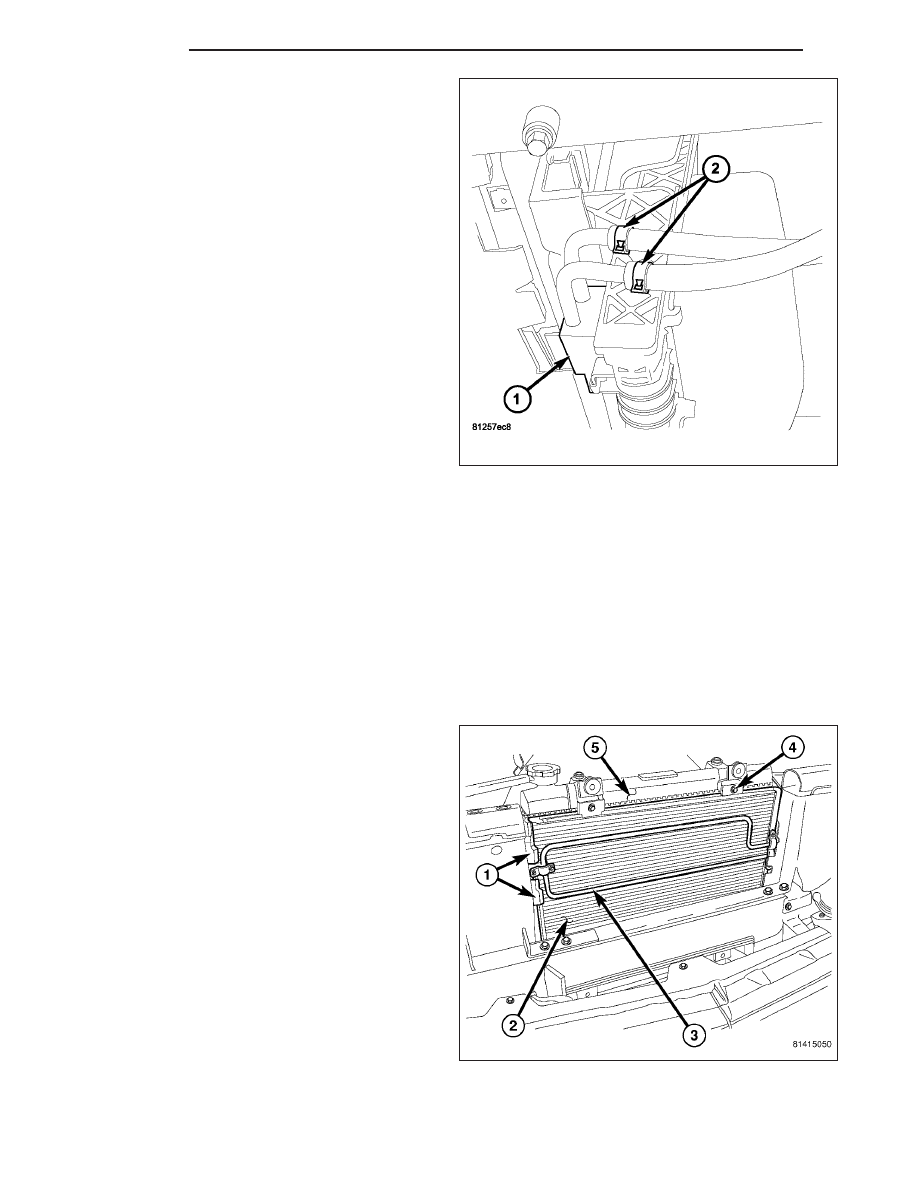Dodge Dakota (ND). Manual - part 131

9. Disconnect the power steering cooler lines (2).
10. Remove the lower radiator hose.
11. Lower vehicle.
12. Remove upper radiator mounting bolts.
13. Remove radiator.
14. Remove
power
steering
fluid/transmission
oil
cooler form the radiator, if necessary.
CLEANING
Clean radiator fins With the engine cold, apply cold water and compressed air to the back (engine side) of the
radiator to flush the radiator and/or A/C condenser of debris.
INSPECTION
The radiator cooling fins should be checked for damage or deterioration. Inspect cooling fins to make sure they are
not bent or crushed, these areas result in reduced heat exchange causing the cooling system to operate at higher
temperatures. Inspect the plastic end tanks for cracks, damage or leaks.
Inspect the radiator neck for damage or distortion.
INSTALLATION
The radiator has two isolator pins on bottom of both
tanks. These fit into alignment holes in radiator lower
support.
1. Install power steering cooler, if removed.
2. Install transmission oil cooler if removed.
3. Install the upper radiator mount
4. Position isolator pins into alignment holes in radia-
tor lower support.
5. Install upper radiator support. Tighten bolts to 23
N·m (200 in. lbs.)
6. Install LH and RH radiator side seals.
7. Install upper radiator hose.
8. Install overflow tube.
9. Install radiator shroud.
7 - 36
ENGINE
ND